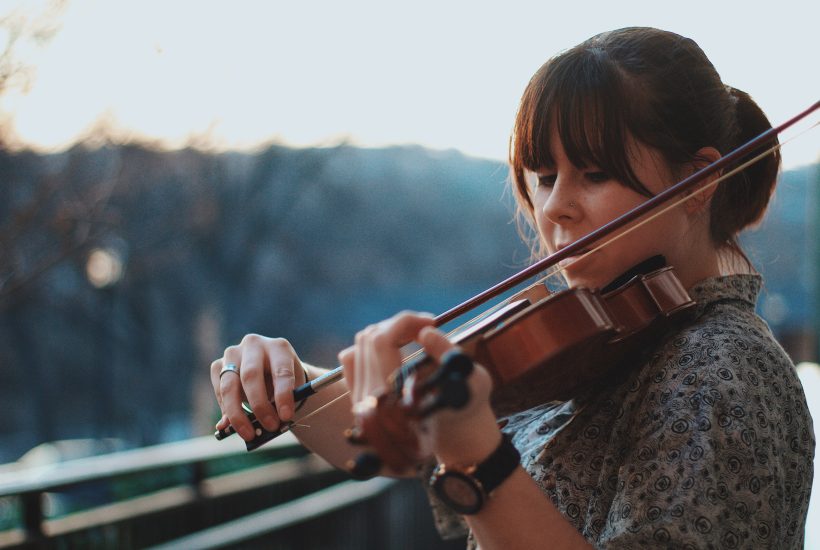Business
The Music of Money: How to Invest in Fine Instruments
Investors in rare musical instruments should trust musicians, who have been used to handling fragile instruments from a very young age. There’s a reason why international corporations and private investors lend their valuable instruments to professional musicians. This is the most direct form of impact investing, where a financial vehicle can benefit an artist’s career and bring pleasure to audiences.

In times of recession, investors may turn to collectibles to diversify their portfolios and reduce risk. Antique and collectible violins can outperform many traditional financial assets, bringing in annual returns of up to 12% and often more. But it’s not just about money. Investing in rare musical instruments requires passion, skill, knowledge, and patience. Here are just a few things to consider:
A few classic Italian violin makers are the gold standard
The market for antique musical instruments is very traditional. For example, the classical shape of a violin hasn’t changed in 500 years. In the future, it is possible that modern-day luthiers could make significant innovations. Right now, however, the most sought-after are masters who lived centuries ago such as Guarneri, Stradivari, Amati, Bergonzi, and Guadagnini — nearly all of them from the Italian city of Cremona. There are also other makers to consider from outside Italy, such as Vuillaume from France, the Voller Brothers from England and Stainer from Austria.
The period of manufacture is as important as the maker’s name
The most prominent violin makers were active during the so-called Golden Period (1700-1750). But other luthiers are also attractive to investors, such as the best violin makers from the Modern Italian period, stretching from the late 19th century through the middle of the 20th century.
The market is hot right now
During the COVID-19 pandemic and lockdowns, there was a real uptick in the rare musical instruments market, which is a segment of the art market. The finest instruments — those that come from a recognized master, with good provenance, reliable documentation, and in superior condition — don’t stay on the market long. And sometimes collectors are reluctant to sell them at all.
New York City is a good place to start
You can always buy an instrument online, but I don’t recommend it to the inexperienced. New York has the largest concentration of professionals — dealers, investors, and musicians. The city has a long tradition in the instrument trade and a wide choice of musical instruments from around the world.
A violin’s provenance can boost its price
The value of an instrument can be moderated or adjusted by previous owners. This summer, a violin used for the soundtrack of the 1939 movie “The Wizard of Oz” sold for over $15 million. It was once owned by Toscha Seidel, one of the greatest violinists of the 20th century.
Condition is important
The most expensive violin in the world, the “Messiah” Stradivarius of 1716, is impossible to value because the instrument is in mint condition. Stradivari made it during his golden period, but the violin remained in his shop for another generation after his death in 1737 and even afterward was never played for any length of time.
A violin is meant to be played
Investors in rare musical instruments should trust musicians, who have been used to handling fragile instruments from a very young age. There’s a reason why international corporations and private investors lend their valuable instruments to professional musicians. This is the most direct form of impact investing, where a financial vehicle can benefit an artist’s career and bring pleasure to audiences, while simultaneously being an appreciating asset. Violins are made from high-quality resonant maple and spruce, so the vibration of the wood helps to keep them healthy. It’s also essential to have proper insurance covering both damage and catastrophe. We buy insurance for our bodies and our other possessions. Why not for fragile resonating instruments?
Don’t forget to consult an expert
Unsurprisingly, fraud is common in the collectibles market, and in some cases, fakes have been prevalent for centuries. Experts can help identify and verify an instrument, so make sure you consult with one before a purchase – perhaps even get a second opinion. They can tell you a lot about an instrument, using archival information and sometimes with the help of new technologies. Building a relationship with a dedicated luthier, dealer, or expert could save you a lot of time and money, and lock in a good investment rather than a speculative one.
__
(Featured image by Elijah M. Henderson via Unsplash)
DISCLAIMER: This article was written by a third party contributor and does not reflect the opinion of Born2Invest, its management, staff or its associates. Please review our disclaimer for more information.
This article may include forward-looking statements. These forward-looking statements generally are identified by the words “believe,” “project,” “estimate,” “become,” “plan,” “will,” and similar expressions. These forward-looking statements involve known and unknown risks as well as uncertainties, including those discussed in the following cautionary statements and elsewhere in this article and on this site. Although the Company may believe that its expectations are based on reasonable assumptions, the actual results that the Company may achieve may differ materially from any forward-looking statements, which reflect the opinions of the management of the Company only as of the date hereof. Additionally, please make sure to read these important disclosures.

-

 Africa1 week ago
Africa1 week agoBLS Secures 500 Million Dirhams to Drive Morocco’s Next-Gen Logistics Expansion
-

 Fintech2 weeks ago
Fintech2 weeks agoRipple Targets Banking License to Boost RLUSD Stablecoin Amid U.S. Regulatory Shift
-

 Impact Investing3 days ago
Impact Investing3 days agoSustainable Investments Surge in Q2 2025 Amid Green and Tech Rebound
-

 Biotech1 week ago
Biotech1 week agoBiotech Booster: €196.4M Fund to Accelerate Dutch Innovation













